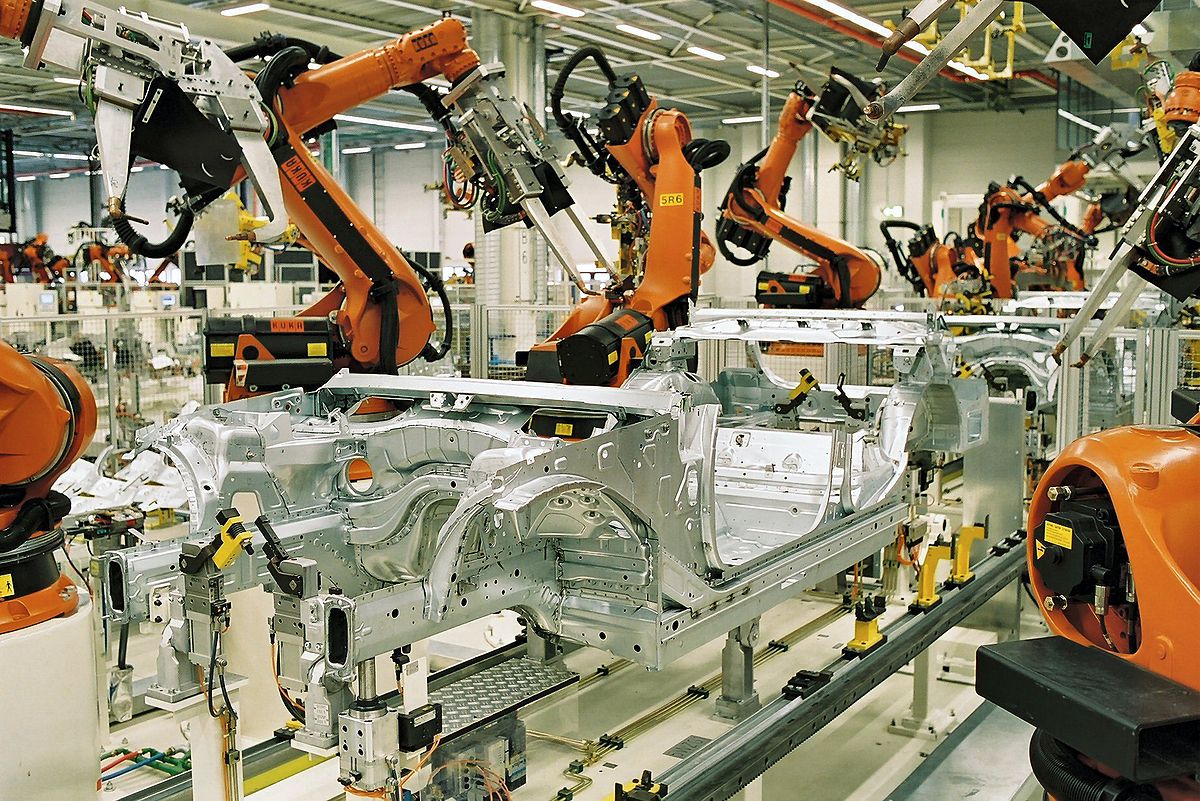
Secondary industries play a vital role in the world of economics and have a significant impact on global trade and development. These industries encompass a wide range of activities, including manufacturing, construction, utilities, and transportation. While primary industries involve the extraction of raw materials, secondary industries transform these materials into finished goods and products that meet the demands of consumers.
In this article, we will delve into the fascinating world of secondary industries and uncover some astonishing facts that shed light on their importance and influence. From the scale of production to the advancements in technology, secondary industries have shaped the modern world in ways that often go unnoticed. So, let’s dive in and explore these twelve astonishing facts that will give you a newfound appreciation for the role of secondary industries in our everyday lives.
Key Takeaways:
- Secondary industries are crucial for creating jobs, driving economic growth, and making the products we use every day. They also lead the way in adopting new technologies and promoting sustainability.
- From building infrastructure to producing goods for global trade, secondary industries play a vital role in shaping our world and contributing to the prosperity of local communities.
The Importance of Secondary Industries
Secondary industries play a crucial role in the economy by transforming raw materials into finished goods. This sector encompasses manufacturing, construction, utilities, and other related activities.
Job Creation
Secondary industries are major job creators, providing employment opportunities for millions of people around the world. From assembly line workers to skilled technicians, these industries contribute to reducing unemployment rates.
Economic Impact
The growth of secondary industries has a significant impact on the overall economy. As these industries expand, they stimulate economic development, increase productivity, and contribute to GDP growth.
Technological Advancements
Secondary industries drive innovation and technological advancements. From automated manufacturing processes to the use of robotics and artificial intelligence, these industries are at the forefront of technology adoption.
Global Trade
Secondary industries are key players in international trade. They produce goods that are exported to different countries, contributing to trade balances and fostering economic relationships between nations.
Sustainability Efforts
Secondary industries are increasingly focused on sustainability initiatives. They aim to minimize their environmental impact through the adoption of eco-friendly practices, waste reduction, and the use of renewable energy sources.
Supply Chain Management
The success of secondary industries relies on efficient supply chain management. From sourcing raw materials to delivering finished products, robust supply chains ensure the smooth flow of goods and services.
Collaboration with Primary Industries
Secondary industries heavily depend on primary industries for their raw material supply. This collaboration creates a symbiotic relationship, driving economic growth and ensuring the availability of necessary resources.
Infrastructure Development
Secondary industries contribute to the development of infrastructure. Construction activities, transportation networks, and utilities are essential for supporting the growth of these industries and improving overall connectivity.
Impact on Local Communities
Secondary industries generate employment opportunities in local communities, stimulating economic growth at a grassroots level. They often support social development initiatives, contributing to the well-being of the surrounding population.
Resilience and Adaptability
Secondary industries have demonstrated resilience and adaptability in the face of challenges such as economic downturns and technological disruptions. They evolve to meet changing market demands, ensuring their survival and growth.
Contribution to GDP
Secondary industries make a significant contribution to the Gross Domestic Product (GDP) of countries worldwide. Their output and revenue generation have a direct impact on the overall economic performance.
As evident from these 12 astonishing facts about secondary industries, this sector plays a pivotal role in driving economic growth, technological advancements, and job creation. The importance of secondary industries cannot be overstated, as they contribute to the overall prosperity and development of nations.
So, the next time you use a manufactured product or benefit from infrastructure development, remember the significant role that secondary industries play in making it possible.
Conclusion
Secondary industries play a crucial role in the modern economy, driving innovation, creating employment opportunities, and contributing to overall economic growth. From manufacturing to construction, these industries have a significant impact on our daily lives. Hopefully, the astonishing facts listed above have provided you with a deeper understanding of the importance and impact of secondary industries in our society.
FAQs
Q: What are secondary industries?
A: Secondary industries involve the processing or manufacturing of raw materials into finished products. They include sectors such as manufacturing, construction, utilities, and more.
Q: What is the role of secondary industries in the economy?
A: Secondary industries contribute to economic growth by adding value to raw materials, providing employment opportunities, generating revenue, and driving technological advancements.
Q: How do secondary industries impact society?
A: Secondary industries play a vital role in meeting the demands of consumers, improving infrastructure, and facilitating economic development. They also contribute to the overall well-being, prosperity, and standard of living of a society.
Q: What are some examples of secondary industries?
A: Examples of secondary industries include automobile manufacturing, construction companies, textile factories, food processing plants, and electronics assembly plants.
Q: How has technology influenced secondary industries?
A: Technological advancements have revolutionized secondary industries, leading to increased productivity, automation, and more efficient production processes. This has resulted in higher quality products and reduced costs.
Q: Are secondary industries sustainable?
A: The sustainability of secondary industries depends on various factors, including resource management, environmental impact, and social responsibility. Many industries are implementing sustainable practices to minimize their ecological footprint.
Was this page helpful?
Our commitment to delivering trustworthy and engaging content is at the heart of what we do. Each fact on our site is contributed by real users like you, bringing a wealth of diverse insights and information. To ensure the highest standards of accuracy and reliability, our dedicated editors meticulously review each submission. This process guarantees that the facts we share are not only fascinating but also credible. Trust in our commitment to quality and authenticity as you explore and learn with us.
